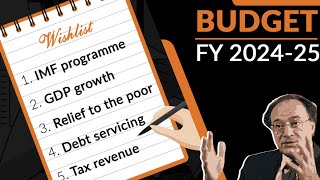Just as vaccines work by stimulating the body's immune system, last year's sell-off may have helped emerging markets build defences against the damage they have suffered during past US rate rise cycles. This week's market moves are rekindling memories of past emerging market crises, after a paper from the San Francisco branch of the US Federal Reserve sparked a surge in the greenback and US yields, an issue which is likely to be debated at next weekend's G20 meeting of world powers.
The paper confirmed what many have long suspected - markets have been too conservative in pricing rate rises. Fed officials expect rates to be 1 percent and 2.5 percent by end-2015 and end-2016 respectively, a quarter percentage point above what was priced. Just how bad a hawkish Fed can be for emerging markets is well-documented. Last year a mere hint from it about cutting back - or tapering - bond buying - set off a storm that knocked 10 and 20 percent respectively off emerging currencies and stocks. Local bond yields surged 200 basis points on average.
For market participants, 1994 is etched in memory as the year when a shock rate rise crushed US Treasuries, eventually sparking Mexico's "tequila" crisis and paving the way for the Asian crash of 1997. Similarly, Fed action in 1999 had a role in the Russian, Brazilian and later Turkish and Argentinian crises. So emerging market investors should be running scared. Instead, many appear remarkably sanguine. "Investor appetite is in favour of emerging markets more than at any time in the past 12 months," said Valentijn van Nieuwenhuijzen, head of multi-asset investing at ING Investment Management who moved his portfolio into an overweight on emerging debt and equities at the end of March this year.
He reckons the sector could rebound in 2015, especially if reforms succeed in big economies such as India and Indonesia. "Investors are realising that valuations are cheap, there have been multiple years of outflows (from emerging funds) and positioning is still relatively light," van Nieuwenhuijzen said. Emerging market funds meanwhile have taken in new cash in most weeks since April, after around $80 billion in outflows in 2013 and the first three months of this year. Even in the past turbulent week, investors poured $3.4 billion into emerging equity funds tracked by EPFR Global, data showed on Friday.
Swiss private bank UBP is overweight EM in its portfolio, says Denis Girault, head of emerging debt, adding: "There are now less things that could go wrong than last year." Emerging markets won't escape unscathed because a rising greenback and Treasury yields make it less attractive for investors to hold non-US assets. Growth momentum in the developing world moreover remains subdued.
So currencies have shuddered this week and options markets are pricing more weakness ahead. Stocks have come off three-year highs and if US yields go up, emerging bond yields must also rise if they are to hold on to investors. But for the most part they already have. J.P. Morgan's GBI-EM index of emerging domestic bonds yields an average 6.6 percent compared with 5.2 percent just before the selling storm kicked off in May 22. In markets such as India and Brazil, yields are 150-250 basis points above last May's levels.
"There is a lot of carry in some EM rates curves," said Kieran Curtis, a portfolio manager at Standard Life Investments. He was referring to the yield premium investors can earn by buying emerging assets at the expense of low-yield currencies. "There is a big cushion if you look at yield spreads between emerging bonds and US Treasuries; it's bigger than what we have typically seen for past 10 years," Curtis added.
That's partly a consequence of last year's meltdown. From Turkey to Indonesia, central banks raised interest rates by hundreds of basis points and many, spooked by the sell-off, started to enact long-delayed reforms such as curbing subsidies that had blown out their current account deficits. In India, once part of a group dubbed the Fragile Five, the deficit has snapped in to 1.7 percent of annual economic output, from 5 percent a year ago. Currency reserves in big emerging markets, not counting China, have risen by over $100 billion since January, with Indian reserves alone up $25 billion.
Research from RBC predicts a 3-6 percent depreciation on emerging currencies versus the dollar; pretty big but less than the 9 percent of 2013, the bank says. There has also been the odd occasion when emerging markets dealt well with Fed tightening - in 2005 for instance, when they enjoyed big surpluses and were benefiting from recent reforms.
A Societe Generale study that examined 16 episodes of rising US yields between 2000-2013 concluded the 2013 shock was exceptional in its ferocity, possibly because of the calm that prevailed for the three preceding years on Treasury markets. The prior episodes had on average fuelled a modest 0.4 percent weakening on emerging currencies and a 25 bps rise in domestic bond yields, the study found. "It is unlikely the severity of the May/July correction will be replicated in the period ahead," said Benoit Anne, SocGen's head of emerging markets and co-author of the study.
Anne warns of risks to markets such as Turkey and South Africa that remain reliant on foreign stock and bond flows and have made few changes to their economic model. For these countries, with slow growth and funding gaps still in excess of 5 percent of GDP, it could be 2013 all over again.
BR100
8,052
Increased By
75.9 (0.95%)
BR30
25,581
Decreased By
-21.4 (-0.08%)
KSE100
76,707
Increased By
498.6 (0.65%)
KSE30
24,698
Increased By
260.2 (1.06%)


















Comments
Comments are closed.